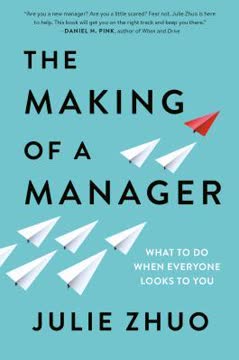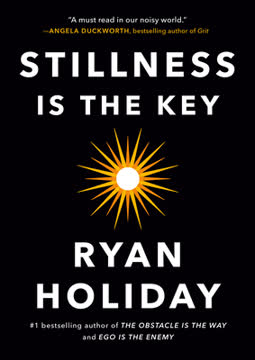Key Takeaways
1. Embrace Change and Creativity in the New Economy
"The world changes, and we must change with it."
The creative economy is here. In today's rapidly evolving world, industries, markets, and job roles are constantly shifting. The rise of the creative economy has placed a premium on innovation, adaptability, and creative problem-solving. This new reality demands a different mindset – one that sees change as an opportunity rather than a threat.
Creativity is now crucial. The ability to generate novel ideas and apply them to real-world problems is becoming increasingly valuable across all sectors. This isn't limited to traditionally "creative" fields; even industries like finance and healthcare are seeking individuals who can think outside the box and drive innovation.
Adapt or be left behind. Those who cling to old ways of thinking and working risk becoming obsolete. To thrive in this new landscape, individuals must:
- Continuously update their skills and knowledge
- Embrace lifelong learning
- Develop a growth mindset
- Be willing to take calculated risks
- Cultivate creative thinking abilities
2. Develop Creative Thinking to Generate Opportunities
"Creativity is not copying."
Creativity can be cultivated. While some may believe creativity is an innate talent, it's actually a skill that can be developed and honed over time. By adopting specific practices and mindsets, anyone can enhance their creative thinking abilities.
Creative thinking is a process. It involves:
- Identifying problems or opportunities
- Gathering relevant information
- Generating multiple ideas without judgment
- Evaluating and refining those ideas
- Implementing the best solutions
Foster a creative environment. To nurture creativity:
- Expose yourself to diverse experiences and perspectives
- Set aside dedicated time for creative thinking
- Create a physical space conducive to ideation
- Collaborate with others from different backgrounds
- Practice techniques like brainstorming, mind mapping, and lateral thinking
- Embrace failure as a learning opportunity
3. Understand Your Personality and Human Capital
"Strategy springs out of your personality."
Self-awareness is key. Understanding your unique combination of strengths, weaknesses, values, and motivations is crucial for personal and professional success. This self-knowledge forms the foundation for developing an effective personal brand and career strategy.
Assess your human capital. Take stock of your:
- Skills and expertise
- Education and experience
- Personal attributes and character traits
- Passions and interests
- Core values and beliefs
Seek feedback. Our self-perception often differs from how others see us. Actively seek honest feedback from trusted colleagues, mentors, and friends to gain a more accurate picture of your strengths and areas for improvement.
4. Define Your Vision, Mission, and Values
"It's hard to score without a goal."
Craft a personal vision. Your vision statement should articulate your long-term aspirations and the impact you want to make in the world. It serves as a guiding star for your decisions and actions.
Develop a mission statement. While your vision describes where you want to go, your mission statement outlines how you'll get there. It should capture the essence of what you do, for whom, and why it matters.
Identify core values. Your values are the principles that guide your behavior and decision-making. They should align with your vision and mission, serving as a moral compass throughout your personal and professional life.
- Example vision: "To inspire and empower others to reach their full potential."
- Example mission: "I use my expertise in coaching and creative problem-solving to help individuals and organizations unlock their creativity and achieve breakthrough results."
- Example core values: Integrity, Innovation, Empathy, Excellence, Continuous Learning
5. Create a Strong Personal Brand
"Branding is the management of differences in the minds of people."
Your brand is your reputation. In today's interconnected world, personal branding has become essential. It's how you differentiate yourself from others and communicate your unique value proposition to potential employers, clients, or collaborators.
Develop a cohesive brand identity. This includes:
- Your unique selling proposition (USP)
- A consistent visual identity (logo, colors, typography)
- Your personal narrative or "origin story"
- A professional online presence (website, social media profiles)
- Your communication style and tone of voice
Live your brand. Authenticity is crucial. Your personal brand should be a genuine reflection of who you are, not a fabricated persona. Consistently embody your brand values in your actions and interactions, both online and offline.
6. Leverage Social Networks and Build Social Capital
"The quality of your social capital is more important than quantity."
Networking is crucial. In the creative economy, who you know can be just as important as what you know. Building a strong network of professional connections can lead to new opportunities, collaborations, and insights.
Focus on quality over quantity. It's not about collecting the most LinkedIn connections or business cards. Instead, prioritize building meaningful relationships with individuals who share your values and can contribute to your personal and professional growth.
Leverage online platforms strategically. Use social media and professional networking sites to:
- Showcase your expertise and thought leadership
- Connect with like-minded professionals
- Stay informed about industry trends and opportunities
- Engage in relevant conversations and communities
Give before you take. The most successful networkers focus on how they can add value to others. By generously sharing your knowledge, resources, or connections, you'll naturally build strong, mutually beneficial relationships.
7. Cultivate Creative Leadership for Sustainable Success
"We need creative leaders with substance: real and valuable knowledge and expertise in at least one relevant area that increases effectiveness."
Leadership in the creative economy. Today's leaders must be able to navigate uncertainty, inspire innovation, and foster a culture of creativity within their organizations or teams.
Characteristics of creative leaders:
- Vision and ability to communicate it effectively
- Openness to new ideas and perspectives
- Comfort with ambiguity and calculated risk-taking
- Empathy and emotional intelligence
- Ability to balance analytical and creative thinking
- Commitment to continuous learning and growth
Foster a culture of creativity. Creative leaders:
- Encourage experimentation and tolerate failure
- Provide resources and time for creative pursuits
- Recognize and reward innovative thinking
- Build diverse teams with complementary skills
- Create psychologically safe environments where ideas can flourish
Lead by example. Demonstrate creative problem-solving in your own work and decision-making. Show vulnerability by admitting when you don't have all the answers and actively seeking input from others.
Last updated:
Review Summary
Creative Personal Branding by Jürgen Salenbacher receives mixed reviews. Some readers find it inspirational and helpful for personal growth and creative thinking, praising its layout and exercises. Others criticize it for lacking substance, being poorly edited, and containing too many buzzwords. The book is described as a guide for developing a personal brand and adapting to market changes. While some appreciate its insights on creativity and self-reflection, others feel it fails to deliver on its promise of personal branding advice. Overall, opinions are divided on its usefulness and value.
Similar Books










Download PDF
Download EPUB
.epub digital book format is ideal for reading ebooks on phones, tablets, and e-readers.




